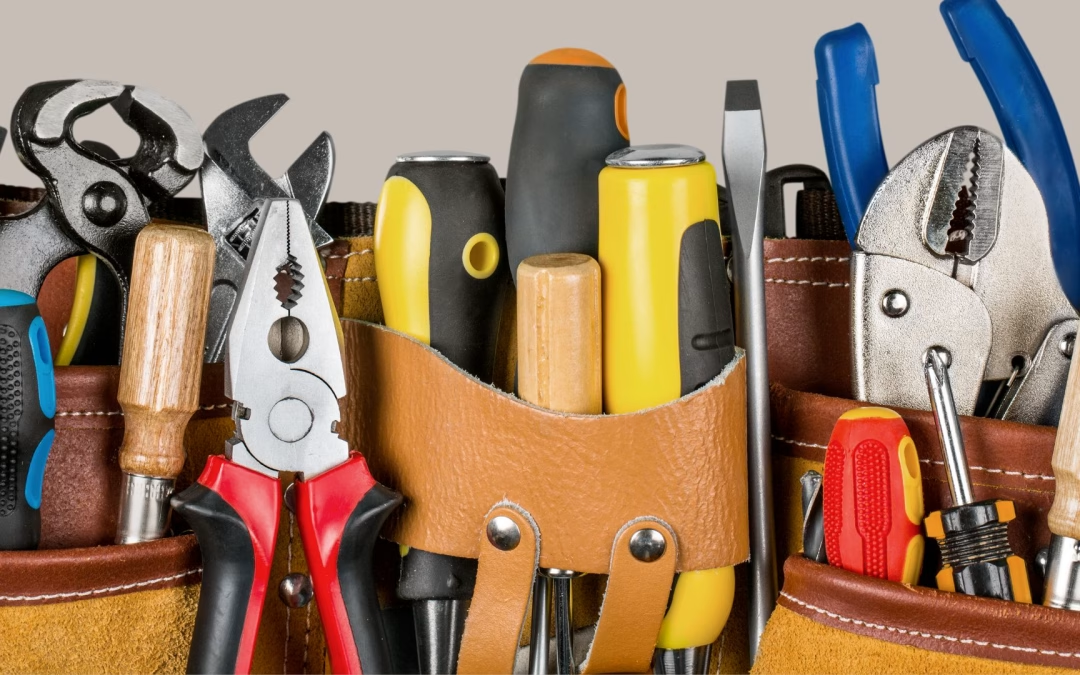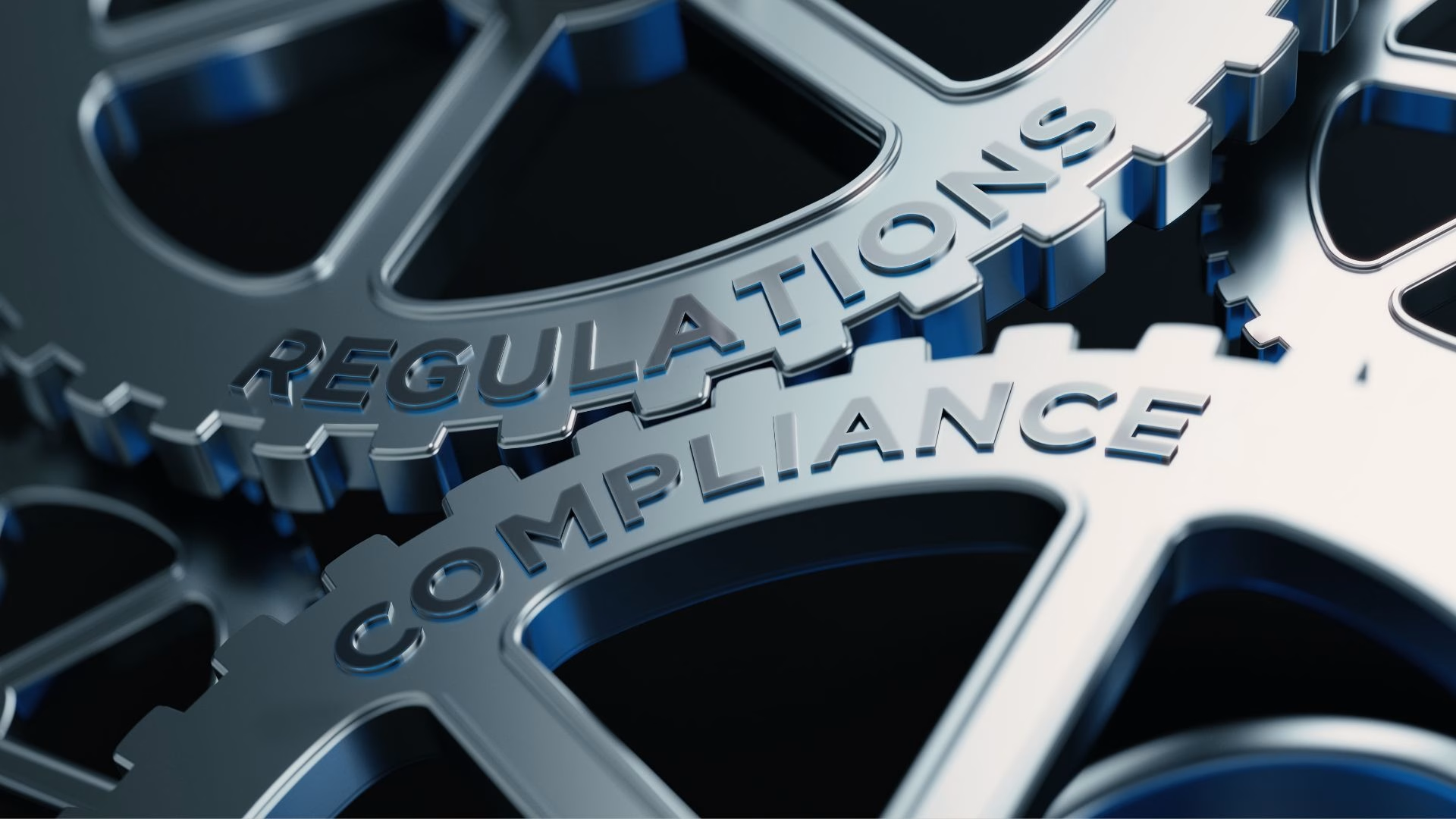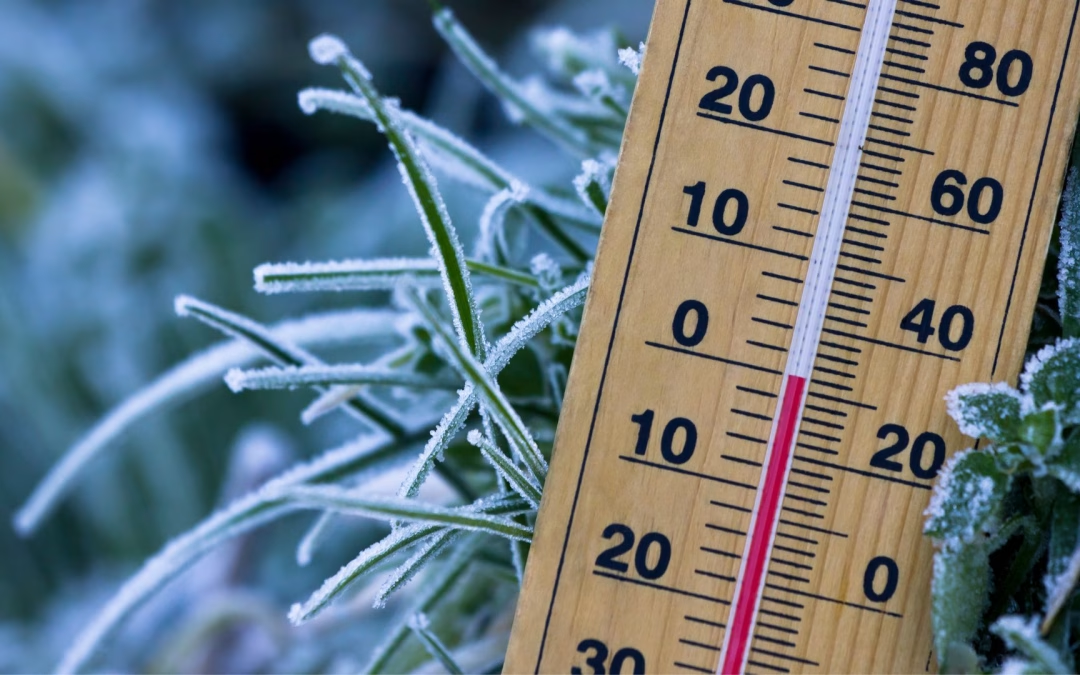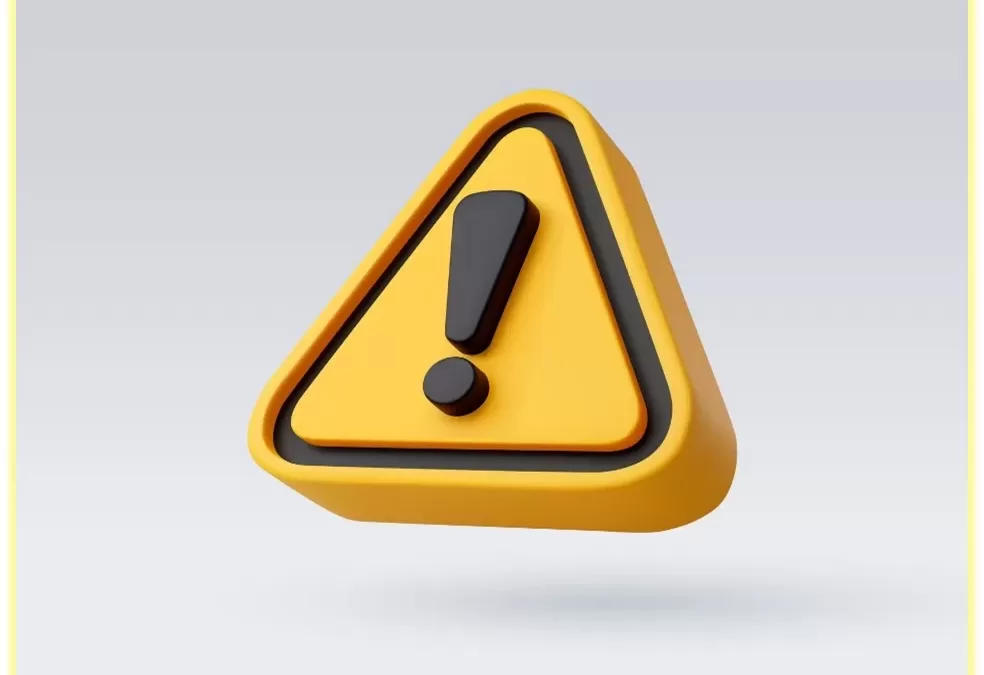
Feb 24, 2025
You already know that disaster restoration is a demanding industry that requires specialized equipment to dry, clean-up, repair, and restore damaged properties. Often, in the rush to make the next buck, we fail to properly maintain this equipment. We also know, (or should know) that proper maintenance is crucial for ensuring safety, reliability, and efficiency. Regular upkeep prevents breakdowns, extends machinery lifespan, and reduces costly repairs. However, when maintenance is neglected, both the job and the equipment suffer, leading to operational inefficiencies, financial losses, and even potential safety hazards.
Equipment Breakdown and Downtime
One of the most immediate consequences of improper maintenance is the increased likelihood of equipment breakdown. Restoration projects operate under strict timelines, and an unexpected failure of a dehumidifier, air scrubber, or water extractor can significantly delay progress. When equipment fails, jobs take longer to complete, leading to frustrated customers and potential loss of business. Additionally, downtime forces restoration companies to rent or purchase replacement equipment, which adds unexpected costs that could have been avoided with some simple, easy maintenance.
Even a bigger headache is when OSHA or other inspectors find frayed or cut cords on your equipment. It’s not talked about much, but cut or damaged extension cords are illegal to use and can cause injury or death. Cutting the ground plug off the end is certainly a no-no.
Increased Repair and Replacement Costs
Equipment that is not properly maintained deteriorates faster, leading to costly repairs and, in some cases, complete replacement. For example, failing to clean air filters in dehumidifiers and air scrubbers can cause motors to overheat, resulting in expensive repairs. Similarly, ignoring oil changes or lubrication needs in heavy machinery leads to mechanical failures. So many times, we fail to follow diesel generator suggestions for changing the oil at the right intervals. Most have 50 hours as a recommendation to change the oil and filter. Incurring minor maintenance costs help prevent spending thousands of dollars on major repairs or new equipment purchases, impacting profitability. With diesel generators costing $50,000 or more, spending an hour and $100 seems logical and appropriate.

Reduced Efficiency and Performance
Disaster restoration equipment is designed to operate at peak efficiency, ensuring that water extraction, drying, and air purification processes are completed as quickly and effectively as possible. When maintenance is neglected, machines work harder to achieve the same results, leading to increased energy consumption and reduced performance. A clogged vacuum filter, for instance, forces an extractor to use more power, which not only increases electricity costs but also reduces the machine’s ability to remove water effectively. Poorly maintained equipment can extend the time required to complete restoration projects, which negatively impacts customer satisfaction and company reputation. Something as simple as cleaning fan blades, checking for damaged cords, plugs, and switches can make all the difference. Even taking a few moments to lubricate the motor can help.
Safety Risks and Liability Issues
Failure to maintain disaster restoration equipment can pose serious safety risks to workers and customers. Malfunctioning electrical equipment increases the risk of short circuits and fire hazards, while mechanical failures in heavy-duty machines can lead to accidents and injuries. Additionally, improper maintenance of air scrubbers and dehumidifiers can lead to mold growth and poor indoor air quality, putting both employees and customers at risk. When accidents or health hazards occur due to poorly maintained equipment, restoration companies can face legal liabilities, lawsuits, and damage to their credibility. Making sure coils in portable dehumidifiers are clean, and changing the filter as needs will ultimately pay big dividends.
Compromised Job Quality and Customer Dissatisfaction
The success of disaster restoration projects relies on the ability to restore properties effectively and efficiently. Poorly maintained equipment leads to subpar results, such as incomplete water extraction, lingering odors, and insufficient drying, which can cause long-term damage to properties. Customers who experience inadequate service due to equipment failures are less likely to trust the company again and may leave negative reviews or complaints, damaging the business’s reputation. We know that Word-of-mouth referrals are valuable in the disaster restoration industry, and dissatisfied customers can drastically impact future business opportunities.

Compliance and Insurance Implications
Most disaster restoration projects must adhere to industry standards and insurance requirements. Neglecting equipment maintenance can result in non-compliance with regulations set by organizations such as the Institute of Inspection, Cleaning and Restoration Certification (IICRC) or the Occupational Safety and Health Administration (OSHA). Additionally, insurance providers could refuse claims related to equipment failures if maintenance records show negligence, leading to financial burdens for the company.
Regular maintenance of disaster restoration equipment is essential for ensuring safety, efficiency, and profitability. Neglecting maintenance leads to equipment failures, increased costs, safety risks, and dissatisfied customers, all of which can severely impact business operations. By implementing routine inspections, timely repairs, and proper cleaning protocols, disaster restoration companies can avoid costly setbacks and provide reliable services. Investing in preventive maintenance not only extends the lifespan of essential equipment but also contributes to a safer and more efficient work environment.
First Choice Equipment Sales and Service sells high-quality drying equipment for construction, restoration, and property renovations. Buying your used equipment can help you upgrade and improve your inventory. If you are trying to sell used equipment, please call us for an estimate. We have completely refurbished used equipment.
Written by: Beth Hinton and D Wagner

Jan 27, 2025
We all know that disaster restoration equipment is critical in addressing emergencies caused by water, fire, and storm damage. However, the vulnerability of this equipment to freezing temperatures presents a significant challenge, particularly during extended cold periods. We’ve written about this in the past, but we have added a couple of other considerations not previously mentioned. Extreme cold can damage sensitive components, compromise functionality, and lead to costly repairs or replacements. The last thing you need when you have a $10,000 or $100,000 job in front of you is equipment not working.
By taking proactive measures, restoration contractors can protect their investments and ensure equipment remains operational when needed most. We’ll outline effective strategies for preparing and safeguarding disaster restoration equipment against freezing temperatures.
Climate-Controlled Storage
One of the most effective ways to protect restoration equipment is by storing it in climate-controlled facilities. As a restoration contractor, you should already be doing this! Portable dehumidifiers, air movers, extraction machines, and other sensitive devices are particularly prone to damage in freezing conditions. Storing equipment in a temperature-regulated environment ensures that critical components, such as coils, pumps, and electronic circuitry, remain properly functional. If you own a large generator or a trailer-mounted desiccant, you should really consider keeping them in a climate-controlled building during the bitter cold. Air Scrubbers, Moisture Meters, and deodorization equipment are also vulnerable to bitter cold.
Winterizing Trailer-Mounted Desiccants
Trailer-mounted desiccants are important for large-scale drying operations, but they are not immune to the effects of freezing weather. If you have a propane-fired desiccant, freezing cold temperatures can cause the propane tanks to freeze. You’ll find propane units are quite temperamental in cold weather, and you may need to warm the propane tanks. Be sure that if they are diesel-fired, the diesel has the appropriate additives to ensure proper starting and running. Consider covering your generators and desiccants with weather-proof tarps and thermal blankets during the bitter cold temperatures.
Maintaining Tires and Trailers
Trailers used to transport equipment face unique challenges in winter. This is an often-overlooked area! Cold weather causes tire pressure to drop, increasing the risk of blowouts or accidents. Regularly check and adjust tire pressure to the manufacturer’s specifications. Ensure that tires are in good condition and have adequate tread for traction on slippery roads. To prevent trailers from becoming stuck in mud or snow, keep tow vehicles equipped with chains, shovels, and gravel or sand for added traction. Performing routine inspections of trailer hitches, lights, and brakes can also improve safety and reliability during transport. We see so many trailers rolling down the road with no lights, weaving back and forth because of inadequate towing vehicles, and even parked on the side of the road with flat tires. Don’t let this happen to you.
Using Portable Heating Solutions
Portable heaters are also vulnerable simply because the fuel (gas or oil) can be difficult in freezing conditions. When using portable heaters, prioritize safety by ensuring proper ventilation and using models designed for enclosed spaces. Position heaters away from flammable materials and monitor them regularly to prevent overheating or fire hazards. Never use gas or oil heaters inside a building. Carbon monoxide is not your friend.
Protecting Portable Dehumidifiers
Portable dehumidifiers are extremely sensitive to freezing temperatures, as frozen coils, lines, and pumps can cause irreversible damage. Purging the portable desiccant will help rid it of water. Always pull back the filter and pour RV antifreeze or 20º below zero windshield fluid in the unit. After using it, you should be inspecting and changing these filters. They need to be clean for efficient operation. Before storing or transporting these units in freezing weather, ensure they are fully drained of water. Some dehumidifiers have built-in defrost cycles to prevent freezing during operation, but it’s still important to monitor them closely in low-temperature environments. For added protection store these units in heated spaces when not in use.
Emergency Preparedness Supplies
Having an emergency preparedness kit specifically for freezing weather can save valuable time and prevent damage to equipment. Include items such as antifreeze, insulated covers, portable heaters, and repair tools in your kit. Keep these supplies readily accessible, especially during winter months. Training staff on proper cold-weather protocols ensures that everyone is equipped to manage unexpected temperature drops effectively. Cold weather does require you to be more diligent and plan for the challenges you will face. Most times, when responding to disaster emergencies, flawless working equipment can mean the difference between doing the job right or getting kicked off the job because you couldn’t perform in a timely manner. Things like cleaning liquids and other chemicals are also vulnerable to freezing. Kee[ this inside in a heated area.
Routine Maintenance and Inspections
Most contractors are lax when it comes to preventative maintenance. However, it is crucial to keep disaster restoration equipment in optimal condition. Regularly inspect and service all equipment, paying special attention to components that are prone to freezing or wear. Replace worn seals and test electrical systems to identify potential issues before they become critical. Keep diesel and gas tanks full while waiting for that job. Keeping detailed maintenance records allows for better tracking of equipment performance and timely interventions. Service desiccants and generators according to the appropriate maintenance schedule.
Planning Ahead for Winter Projects
Prepare for unexpected expenses, such as vehicles needing to be towed or your equipment not working properly. Many times, your own facility is vulnerable – be prepared. Consider providing warm clothing for your staff who will work outdoors in the brutal cold. You may even have significant overtime pay for workers who need to do extended work. And don’t forget to remind your drivers that they need to use extreme caution and drive slower. Especially towing trailers or driving bigger trucks.
Protecting disaster restoration equipment from freezing temperatures requires a combination of proactive planning, regular maintenance, and the use of protective measures. By implementing strategies such as climate-controlled storage, winterizing trailer-mounted units, and maintaining proper tire and trailer conditions, restoration professionals can ensure their equipment remains functional and reliable.
Investing time and resources into these precautions not only extends the lifespan of critical tools but also enhances the ability to respond effectively to emergencies, regardless of the weather. In an industry where readiness is paramount, safeguarding equipment against freezing weather is an essential part of maintaining operational excellence. When parts or supplies are needed, call us so we can get them to you fast.

May 22, 2023
Marketers often charge into a prospect’s office with a list of ‘problems’ they’re going to help them solve. The marketer has been conditioned to be a problem solver, so they tend to focus all their energy on how to fix whatever issue the prospect is having. Even many coaches and advisers that teach marketers and salespeople how to ‘sell’ are spewing out the primary theme of solving problems. Unfortunately, marketers are usually trying to solve ‘problems’ that aren’t the number one issue with their client.
marketers and salespeople how to ‘sell’ are spewing out the primary theme of solving problems. Unfortunately, marketers are usually trying to solve ‘problems’ that aren’t the number one issue with their client.
“Every problem has a solution, although it may not be the outcome that was originally hoped for or expected.”
Humans are natural problem solvers. The fact that we’ve endured as long as a group of people as we have is evidence of that. Human beings are also natural problem seekers. Let that one sink in. You know it’s true. And I’m not talking just about those associates we are involved with every day! It’s daunting and takes focus to avoid. We just spend so much time solving problems, that we naturally seek problems to resolve, even if we don’t have those difficulties right now.
Group–think pervades customer service. Most believe that if we (or our marketers) can be courteous, responsive, helpful and resolve a customer issue quickly, then we’ve excelled at the art of customer service and by extension, solve their problems.
But resolving today’s issue usually doesn’t prevent future issues, either the same one or a related concern. Leading service companies are realizing that there are predictable patterns to prospect issues (at least within a specific vertical), and sometimes across the board. There’s even the misconception that it’s related to a complaint about the company you represent. Reality, though, many times it’s directly related to the prospects’ own issues or problems. Business people (your prospects) do have issues, concerns and problems that you can solve.
Three simple steps to solve problems.

- Identify the problem. What is the problem? Get some background of what happened and when. Clarify and learn as much as you can. What issue or challenge does it present to them or their business?
- Ask and answer the best questions. Don’t blow past this step and rush to a solution. How prevalent is the problem? Are we dealing with it every month? Week? Day? Who is involved in the problem? Same people every time or different? How long has this been going on? Has something happened that has caused this to happen? Did something stop happening that caused this to happen?
- Decide who owns the solution and be clear so they can be accountable. If they aren’t directly able to accept and use your suggestions, you’re barking up the wrong tree.
The ideas listed above are over-simplification, but it’s important to start somewhere.
Typically, more often than not, the problem first mentioned is not the one they need the solution to! Many times, prospects, clients, customers will beat around the bush and NOT tell you their primary pain or concern up front. They keep it to themselves either out of embarrassment or they don’t know their main pain. Let’s face it, solving problems is hard. You must deal with uncertainty, set aside large amounts of time dedicated to working through a solution, and sometimes you don’t find a solution!
That is why the rewards in our society go to those people who solve problems. The more people that experience the problem you are solving and the greater they value a solution, the more you will be financially rewarded for your solution. Just be careful that you don’t charge in there like some knight on a white horse tackling the first issue they mention. Dig deep. Ask lots of questions and listen to what they are really saying.
Co-authored by Beth Hinton and D Wagner

May 2, 2023
In a land where there are around 75,000 mitigation and restoration contractors in the US, each performs their work by doing similar services. We all extract water approximately the same way. Fire and Smoke remediation is also very much the same. Even mold abatement is cleaned up using just a handful of processes. How will you be different than your competitor if you all do the clean-up in a similar way?
extract water approximately the same way. Fire and Smoke remediation is also very much the same. Even mold abatement is cleaned up using just a handful of processes. How will you be different than your competitor if you all do the clean-up in a similar way?
Even more important than how you perform the remediation, is what do you do (or offer) that separates you from the other competitors in your market? When everyone is removing water from the carpet the same way (using truck-mounts or portables), or Xtreme Xtractors, there’s no real reason to use one company over another. Yes, even the drying processes are also very routine. Everyone seems to use dehu’s, air movers, and sometimes air scrubbers.
If each company in your market confirms with the property owner the way you will dry their property, then there’s no compelling reason they need to use you! The less you are different, the less likely they are to use you. Lots of differences – lots of reasons to hire you. When you all do very similar services, it often comes down to who is the cheapest. If you were buying Heinz Ketchup at one grocery store for $4.00, and it was priced at $2.00 at another store nearby, you’d probably not pay $4.00. Why would you, it’s less.
One important factor in differentiation is whether you are different or unusual enough that prices are suddenly not as big a factor. Think of buying a car… one dealer has the car on his lot with exactly the same features as another dealer does a few miles down the road. And the dealer down the road has the same price, but he’s offering free maintenance for a full 4 years! All things being similar, (and even equal), you’ll likely buy the car from the dealer that has the best freebies.
So many contractors tend to make it about the price, but when they demonstrate how different, unusual, or remarkable they are, suddenly price isn’t much of a factor anymore. The customer’s home is like his ‘castle’ and the company chosen will be the one that offers empathy and shows the homeowner how they (contractor) will give them the white-glove treatment, and truly provide services they won’t or can’t get from the other companies.
We’ve learned that people make purchase decisions based on emotion. When it’s “all about price” it falls into a commodities situation, and then it IS about the price. How you demonstrate empathy, offer special ‘concierge’ services, or are willing to work with the homeowner’s schedule, all of a sudden they quit  worrying about the cost. They are focused on your concierge services, a bundle of special things that only your company offers.
worrying about the cost. They are focused on your concierge services, a bundle of special things that only your company offers.
Few of us can legitimately state we are unparalleled or unique. We need to launch solid Differentiation, clearly separating us in some way from our local competitors. The days of being one up on your competition by having a special piece of equipment or process are gone. So is your ability to say you are “unrivaled” in what you do as part of the mitigation or restoration process.
Offering to do things for them that aren’t normally available from the other companies, such as: providing personal concierge services, or paying for them to stay in a hotel the first night. These little things amount to huge differences between you and the others. Especially combining several small things together as a bigger offer. Providing them with an emergency kit, compiled by your company, will help differentiate you from other contractors.
In the emergency kit, you might want to include toothpaste, tooth brush, deodorant, and several other personal grooming items. One client we work with includes a teddy bear in the kit. These kits work well for Fire or Smoke, or even Mold projects where they have to move out of the house temporarily. When you decide that you are not special and offer the same thing as everyone else – then and only then are you in a position to be creative and Different. Simply, to be different, you need to offer something the rest of your competitors either can’t or won’t offer.
Differentiation has two major components: overall distinction and perception of scarcity. Ask a buyer why they selected one provider over another when they make a purchase and there’s usually more than one single reason. There’s a collection of distinctions that ultimately makes the front-runner stand out in the customer’s mind. The companies winning the job are often the ones who help buyers see what’s possible, different, and bring new ideas to the table.
Also, when a potential customer perceives that something is scarce, it stands out to them, and they tend to desire it more when it’s difficult to find.
Co-authored by Beth Hinton and D Wagner

Mar 23, 2023
You need to see what the problem is made of – before trying to solve it. So many restoration contractors, (and even marketers) tend to dive into the issue  without considering what’s really needed. We’ve had contractors call us for equipment or supplies and often “shoot from the hip” without thinking through what they really need. We’re happy to sell you a LOT of equipment or just a couple pieces.
without considering what’s really needed. We’ve had contractors call us for equipment or supplies and often “shoot from the hip” without thinking through what they really need. We’re happy to sell you a LOT of equipment or just a couple pieces.
A perfect example is someone needing more air movers or dehu’s and just “winging it” – asking for some random amount of equipment. Little thought was given to what models or quantity they really needed – especially considering that need was during a mini-CAT, or even a hurricane.
Please don’t take this the wrong way – but we like to help a client out when they know exactly what they need – or at a minimum – discuss with us what the situation is, and then we can help solve the problem without selling you too much or sometimes worse – too little.
One of the big differences between First Choice and the “big boys” (major supply houses) is we aren’t motivated to ring up the big dollars each time. So many of those big boys have a huge monthly rent on their warehouse and many employees – all contributing to the need to charge a lot more and sell you even more than you need. Sure, they claim to have value-added services such as training and classes, but that may not be necessary when you need to buy equipment.
With our very low overhead and just a few quality people on staff, we can usually provide you with not only superb service, but also excellent prices on what you need. National supply houses may claim to buy huge quantities from the manufacturer, but there is a real cost associated the warehousing, and handling of that equipment.
Often, buying too much can take valuable resources (money) away from your cash reserves. Certainly the last thing you need is to be short on cash and not be able to make payroll. The “big boys” want paid right away, and suddenly you find that your other bills are delinquent. First Choice will work with you, and when it’s a major purchase, we have financial resources from third parties to help.
If you are local to Colorado, you might even consider renting some items from us. We have many pieces of equipment that can be rented at incredibly reasonable rates.
It’s important for you to remember that we sell NEW, Buy and Sell USED, and have supplies in quantities that make sense. All our USED equipment is completely checked and serviced as needed so you have confidence in the used equipment you buy from us.
And don’t forget, if you own trailer-mounted generators or desiccants, Wade is on staff to service machines making them able to properly work for you when you need them (often in the middle of the night)!
Authors Beth Hinton and D Wagner





 marketers and salespeople how to ‘sell’ are spewing out the primary theme of solving problems. Unfortunately, marketers are usually trying to solve ‘problems’ that aren’t the number one issue with their client.
marketers and salespeople how to ‘sell’ are spewing out the primary theme of solving problems. Unfortunately, marketers are usually trying to solve ‘problems’ that aren’t the number one issue with their client.

 extract water approximately the same way. Fire and Smoke remediation is also very much the same. Even mold abatement is cleaned up using just a handful of processes. How will you be different than your competitor if you all do the clean-up in a similar way?
extract water approximately the same way. Fire and Smoke remediation is also very much the same. Even mold abatement is cleaned up using just a handful of processes. How will you be different than your competitor if you all do the clean-up in a similar way? worrying about the cost. They are focused on your concierge services, a bundle of special things that only your company offers.
worrying about the cost. They are focused on your concierge services, a bundle of special things that only your company offers.
 without considering what’s really needed. We’ve had contractors call us for equipment or supplies and often “shoot from the hip” without thinking through what they really need. We’re happy to sell you a LOT of equipment or just a couple pieces.
without considering what’s really needed. We’ve had contractors call us for equipment or supplies and often “shoot from the hip” without thinking through what they really need. We’re happy to sell you a LOT of equipment or just a couple pieces.